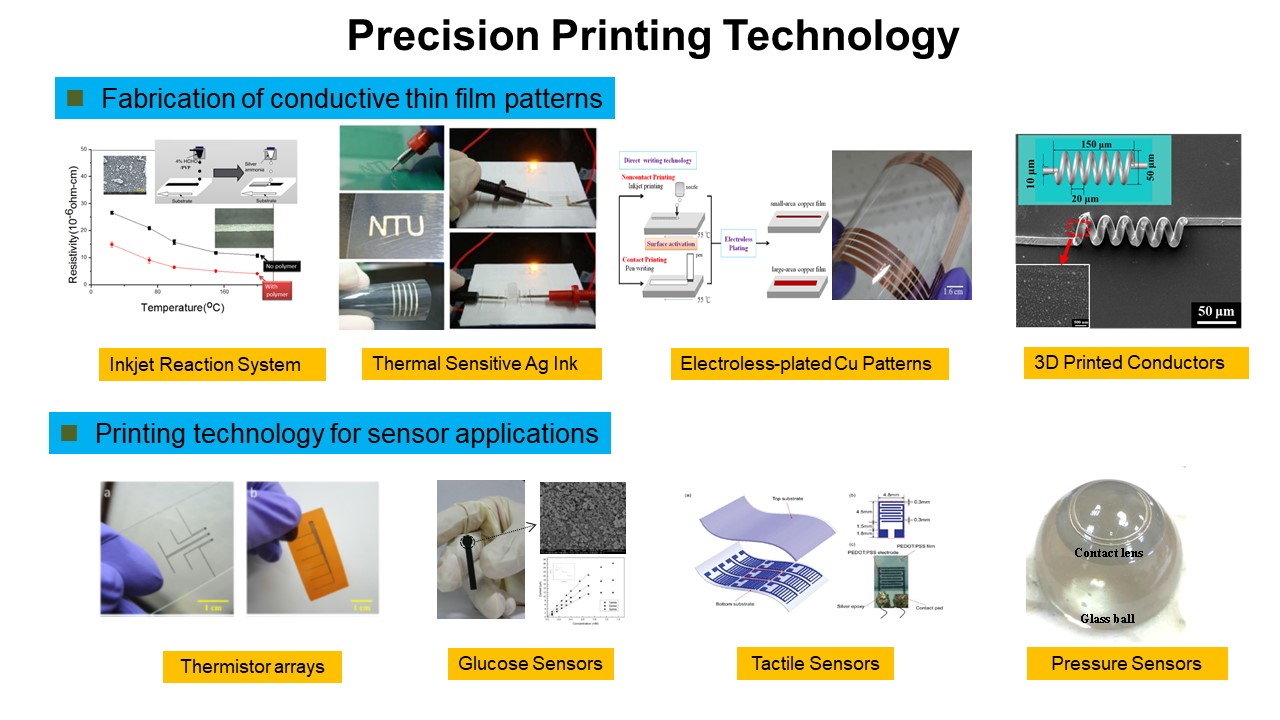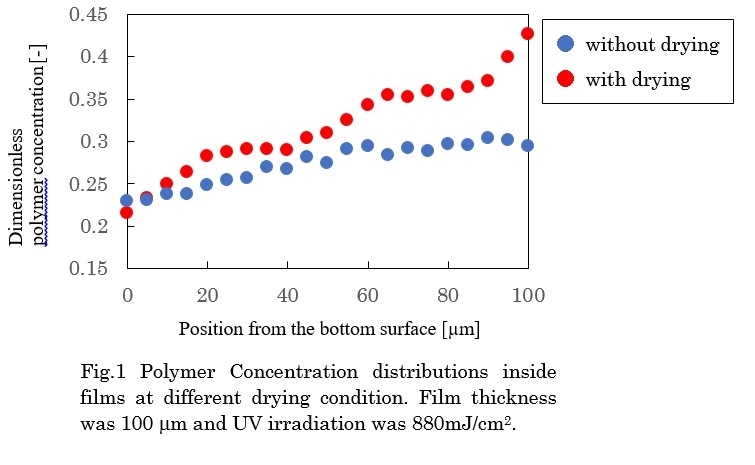
To meet the increasing demands in portable microelectronics, thin film pattern formation on plastic substrate surfaces has recently received great interests. Metal conductive interconnects, as the essential components in any electronic devices, built on flexible or even stretchable plastic substrates are necessary for the realization of portable or wearable devices. However, due to the incompatibility between metal and plastic molecules, it is challenging to resolve the surface bonding at the metal/plastic interfaces. Moreover, in order to manufacture conductive interconnects with fast speed and low costs, printing procedures with high reliability are also needed. To address these problems, we developed several ink formulation and pre-treatment methods to improve the adhesion between metal coatings and the plastic substrates. In addition, related process parameter adjustments in printing procedures are also provided in this talk to give general guidelines for reliable pattern formation on either 2D or 3D microstructures. Same approach can also extend to fabricate various sensors with great performance. Several examples, such as temperature and humidity sensors, will be given in this talk to show the potential aspects of printing technology in microelectronics.

Coating layers of nanoparticles exhibit a mechanically fragile property upon semidrying. In contrast to fluidic inks where precise shaping is difficult owning to surface tension, viscosity and wetting, semidried layers can selectively be transferred onto a printing plate and thereby enabling patterning with micrometer-scale features. Reverse offset printing and adhesion contrast planography use this patterning principle and allow to generate high-resolution patterns of various functional nanomaterials such as gold, silver, copper, ITO and others. Here, we used a simple discrete element method to simulate the patterning step so as to reveal its patterning mechanism at the constitutive particle level. The modelling clarified the rule of cohesive force between particles and their interfacial adhesion against a substrate in the pattern formation. In the presentation, the criteria for successful patterning is discussed together with the comparison with experimental results.
Irradiation of UV light onto a photo-reactive solvent/monomer/initiator ternary solution film triggers polymerization and a spontaneous phase separation between polymer-rich and solvent-rich phases. Subsequently, the volume occupied by the solvent was replaced by air when the solvent-rich phases were dried, resulting in a certain film porosity. This process does not require multi-step rinsing procedures to remove either phase in a selective solvent, providing a promising method for roll-to-roll high-speed fabrications of porous polymer films. Despite extensive previous studies on solvent-free photo-reactive systems [1], no quantitative data is currently available on the evolutions of local composition distributions in solvent-based reactive coatings. In this study, we developed a confocal Raman spectroscopy technique to directly determine local polymer concentrations across the film. We used polyester acrylate (M9050, Toagosei Mw = 1000~1500) as the photo-reactive monomer, and 1, 3 α-alkyl amino phenone (Irugacure 379 EG, BASF) as the photo-initiator. Methyl isobutyl ketone (MIBK, Wako) was chosen as the solvent, which is immiscible with the reactant of the polymerization reaction. The solution was dropped on a glass plate and dried at 30 °C for 1 min prior to the irradiation of light of wavelength 365±5 nm. To avoid beam scattering at phase-separating interface in the Rama spectroscopy, the solvent was replaced by a reactive monomer to match the local reflective indices in the cured film [2]. The results indicated that the polymer concentration profiles near the top surface were tunable by solvent drying condition, whereas those near the bottom were almost independent on the condition.
References
[1] H. Nakanishi, T Norisuke, Q.T.Miyata, J. Phys Chem Lett. 4 (2013) 3978-3982.
[2] H.Yoshihara, M.Yamamura, Journal of Coating Technology Research, in press

The term “back diffusion” is sometimes used to describe local diffusion of solvent in the opposite direction with respect to its evaporation. Such a diffusion emerges when we stratify a solvent-rich liquid layer on top of a solvent-lean layer and simultaneously dry them. The back diffusion across the two-layer interface alters not only drying rates and residual amounts of the solvent but also microstructure developments in drying coatings. Despite practical utilities to create stratified thin liquid layers in printable electronics and many other functional coatings, the role of back diffusion in drying kinetics of two-layer coating is still poorly understood. In this study, we present drying kinetics of solvent-base two-layer polymeric solution films coated simultaneously or in tandem. The layers contain tetrahydrofuran (THF) as solvent, and polystyrene (PS) or cellulose acetate butyrate (CAB) as a polymeric binder. The blade coating method was used to stratify two solutions layers of different concentrations. The decrease in mass of the wet-on-wet coating was measured by with an electronic balance and recorded to calculate the solvent drying rate. The results showed that, in the case of stratified PS/THF binary coatings with the same solvent concentration of the top layer, the solvent drying rate monotonically decreased with decreasing the bottom-to-top solvent mass ratio, indicating a retarded drying due to a back diffusion of the solvent. However, the opposite trend was observed in drying of a PS/THF layer on top of a CAB/THF layer; the drying rate increased with increasing the bottom-to-top solvent mass ratio even when the solvent concentrations in the top layers were the same. This puzzling drying behavior was qualitatively explained by considering spontaneous phase separation between immiscible PS and CAB solutions and development of interconnected domain interfaces that act as a solvent diffusion pathway across the thickness.